The content of the article
Melons ... With this word, the taste of their flesh immediately pops up in memory. Sweet, juicy, melting in your mouth. Just do not buy it. Of course, the inhabitants of the southern regions easier. In them, they quietly grow and mature.
But what about those who live in the middle lane? How to grow melons in open ground? It turns out that this is quite real. Let's look at all the steps in detail so that you can adapt them to your region. If you have a greenhouse, you can grow melons even closer to the north, but now we are interested in open ground.
Seed selection
It is quite natural that the variety for planting should be selected early. No matter how beautiful words praise taste, color and size, we are only interested in the ripening period. With proper agricultural technology, the fruits will already have a great taste.
An important feature of melon seeds: female flowers are obtained from seeds older than 3 years. Fresh seeds give plants with a large number of male flowers, so they bear little fruit.
To check for hollowness, fill the seeds with plain water. Good and full will remain at the bottom, empty and worthless - will emerge. Go to the next step.
Soaking and preparing for sowing
Now you need to take a shallow dish. At the bottom, put several layers of loose paper or 2 layers of cotton fabric. Soak the whole thing with warm water, put the swollen seeds in one layer. Cover with a light cloth or white paper, cover with a bag. Next, the entire structure is put on germination in a dark, warm place.
The optimum temperature for melon germination is + 25-27 ° C. Periodically look under the shelter to slightly moisten the seeds if necessary. As soon as the first sprouts begin to hatch, a new stage begins.
Sowing
Melons are not planted like a usual bunch of seedlings. For initial development, the sprouts need room. Therefore, each seed is placed in a separate container. It can be peat cups or small containers with soil. A depth of 10 cm will be enough.
The soil mixture should be light, loose and nutritious. It must be pre-frozen on the street or in the freezer. Then thaw and process with a strong solution of potassium permanganate or phytosporin. You can use a weak solution of em preparations. For additional disinfection, the soil is calcined in the oven at a temperature of + 100-105 ° C.
One seed is placed in each cup. After all, the plant will be there until the appearance of 5 of this leaf. And if there are 2 or more of them, then the struggle for food and light is inevitable. By the way, by the time of landing in open ground young melons should be at least 31-33 days. Consider this for your region, so as not to be late with sowing.
After you put the seed in the ground, you need to cover the container with clear plastic or glass. Thick film will also work. Again, we return the cups to the darkness and warmth, we are waiting for the sprouts to bite. The next stage begins when the first shoots appear.
Seedling Care
It is nothing complicated. Shelter is removed completely, the glasses are transferred to a warm place with plenty of light.As a rule, additional illumination is rarely required. Because they begin to prepare seedlings no earlier than mid-April, and at this time the length of daylight hours is already decent.
Periodically moisten the soil, but do not fill in until damp. During the seedling period, melons are fed twice with a complete mineral complex fertilizer. 1 - when the first true leaflet appears, 2 - a week before planting in the ground.
To prevent the disease of the black leg of the melon, it is necessary to carefully ventilate the seedlings, but without draft. And further. Being on the windowsill, the seedlings should not touch each other with leaves. Just now there is a certain struggle for a place in the sun. Melons do not know that you have enough space for their full development, therefore they will be extended. Better push the cups away in advance.
You can carefully sprinkle the surface of the soil with dry, clean sand. This will create an imitation of natural conditions. By the way, drainage holes are best done. So you will be sure that the roots breathe freely, and do not swim in the slush.
A week before planting melon seedlings in the ground or a little earlier, you need to pinch her crown. Do this after about 5-6 of this sheet. This procedure will cause the growth of lateral shoots to be activated. In general, pinching plays an important role in the formation of melons, but more on that below.
As soon as the wound is tightened after this procedure, seedlings can be planted in the ground. In this case, the soil temperature should be at least + 16 ° С. Usually, this is the third decade of May.
Where to plant melon
They begin to prepare a place for planting seedlings in the fall. To do this, the beds are carefully weeded from weeds. Then it must be dug up, choosing weeds. If the earth is not loose and nutritious enough, then you must definitely bring clean sand, greasy manure or good leaf humus.
In the spring, immediately after the snow melts, the bed is again dug up. At the same time, mineral fertilizers with a high content of potassium, phosphorus and nitrogen are added. What to do, melons love to eat. Precise dosage recommendations should be looked at directly on the packaging. Each manufacturer they are different.
Residents of regions closer to the north can plant melons in warm beds. How to arrange them correctly can be found on the network. Although, with their climate, they probably already know such information well. When growing melons in open ground, these beds will not interfere with the inhabitants of the middle lane.
This method is good in that it provides root system heating for about 2 months. Melons are very thermophilic.
How to plant melons
After preparing the beds, you need to carefully plant the seedlings. To do this, make shallow holes and thoroughly spill them with warm water. Melons are best planted by transshipment. That is, they pull out an entire earthen lump from a glass, trying not to destroy it. Gently placed in a hole with earthen slurry, deepening the melon on the most cotyledonous leaves. Sprinkle with dry dry soil. This will allow moisture to evaporate less.
A place for planting melons is chosen well-lit by the sun. It is desirable that it be blown as little as possible by the winds and there should be no drafts.
Everyone for a week forget about planting, so that they adapt and take.
Tip. Watch the weather forecast. In the event of return frosts, it is necessary to put temporary arcs and throw covering material. Melon does not withstand even short-term cooling below + 3 ° C, immediately dies.
Care
Caring for a melon is quite simple. All conditions are by no means the ultimate truth. They can be easily adjusted according to your capabilities and region of residence.
Watering. Melon does not like water. It is necessary only when the summer turned out to be hot and arid. At the same time, watering the planting is necessary so that the liquid does not fall on the leaves and stems. If dew is noticed in the morning, then you can not water at all today.
A day after each rain or watering, the soil must be loosened. Just do not do this at a distance closer than 10 cm from the stem. The root system of the melon is located almost at the surface. It is very easy to damage.
Hilling. Be sure to seasonize at least 3 times the ground to the stem. This will allow extra roots to grow. So, melon will get more nutrients.
Top dressing. About once every 12-15 days, melons need to be fed. It can be:
- mineral fertilizers
- green infusions
- mullein or bird droppings
All dressings are applied strictly the day after watering, so as not to burn thin feeding roots.
Attraction of bees. As soon as the flowers appear, you need to spray them with a weak sweet solution. You can use jam, honey, sugar. Just do not water from a watering can, as from a shower. Bees smell good over long distances. It will be enough to sprinkle the flowers slightly.
Pinch. After the appearance of the ovaries, all the flowers are removed. It is customary to leave no more than 4 fruits on one plant at a certain distance from each other. Preferably 2 fruits per escape. The remaining stepchildren must pinch.
This procedure should be performed approximately once every 2 weeks. Regularly removing new shoots, we make the melon spend all its strength on filling the left ovaries.
Just don't cut the leaves off completely! They are vital to the plant for the normal process of photosynthesis.
Substrate. Often, gardeners walk around, admire the growing melons. And they do not see that from below the fruits have already begun to spoil the rot. Yes, the peel of a melon is very thin, it immediately starts to deteriorate from an ordinary scratch. Therefore, strictly exclude contact of the fruit with the soil. Under them you can put:
- planks
- plywood boards
- hot cork coasters
- foam plates
- pieces of thick foamed insulation
Everything that is available, everything will fit.
Hide and seek from the birds. Often, almost ripe melons peck birds. In some regions, this is simply the scourge of gardeners. With a slingshot or a gun, sitting in an ambush is worthless. Still, pests and birds eat a lot. What to do? Use the characteristics of the taste preferences of feathered villains.
Have you noticed that birds never touch cabbage? Plain white. They do not like her, and there are no seeds in her. This is important to us. We take the largest burdock of cabbage, preferably semicircular, and not flat. And just cover them with melons.
Birds see burdock from above, think it is heading out and fly by. Why cabbage sticks out among the melon leaves - they are not interested. There are no seeds, so they are looking for food elsewhere.
Harvesting. If you did everything right, then already in mid-August you can begin to harvest the first crop. How to determine that a melon has ripened without cutting the fruit? Just grab it in your hand. A fully ripened melon will fall off the whip itself. Then smell the peel. This characteristic honey sweet aroma cannot be confused with anything.
What to do if the cold is approaching, and the melons are still not quite ripe? There are two options:
- Put shelter over the beds. It can be a thick film or a dense non-woven material. Just be sure to ventilate the landing at least twice a day. Otherwise, the risk of rot and other diseases is great.
- Remove all fruits and put them in a dry, warm place for ripening. At a temperature of + 25-27 ° C, melons finally ripen in about 5-9 days. It all depends on the variety and size of the fruit.
It is best to put sawdust or straw under the fruits. Hay is fine. The main thing is that the litter is hygroscopic and well-kept heat.
Some useful tips
- About a month before the expected fruit collection, the melon is no longer watered and fed. So she will gain the necessary amount of sugar. Ripening dates can be found on the seed bag.If they were presented to you or sold without packaging, then focus on mid-end August.
- Melons are planted according to a pattern of 60 by 80 cm. At the same time, whips should be directed during growth so that they do not get confused and do not block the sun from one another.
- Melon loves potassium. Therefore, along with a mineral water or organic treat it with an infusion of ash. Just be sure to dilute it, otherwise burn the root system.
- Try not to add a lot of nitrogen. This makes the foliage lush and powerful, but it has a very bad effect on the consistency and taste of the fruit. Melons grow loose and watery.
How to grow melons in open ground? After reading our recommendations, you can say yes very easily. And after putting them into practice - provide evidence: a sweet, fully ripened, aromatic fruit.
Video: growing melons in the open field

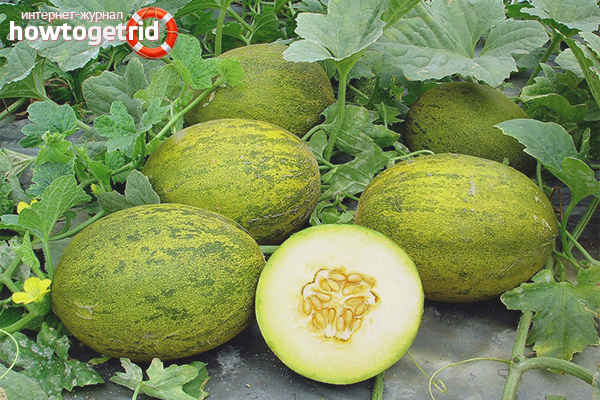

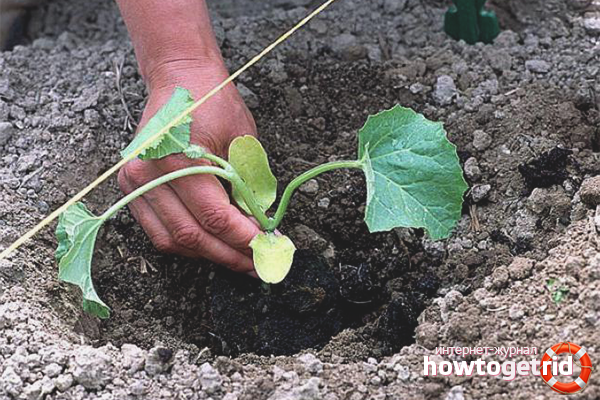

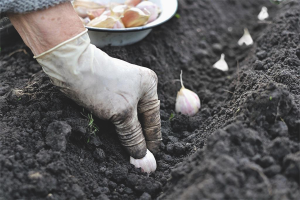
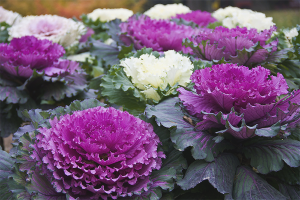

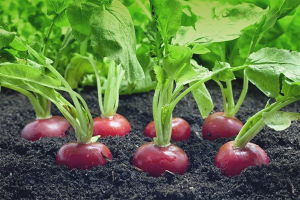
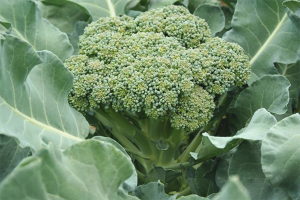
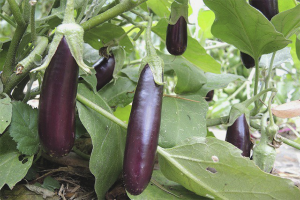

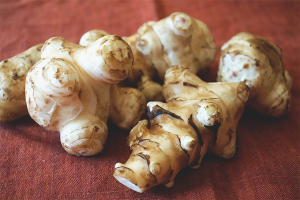
Submit